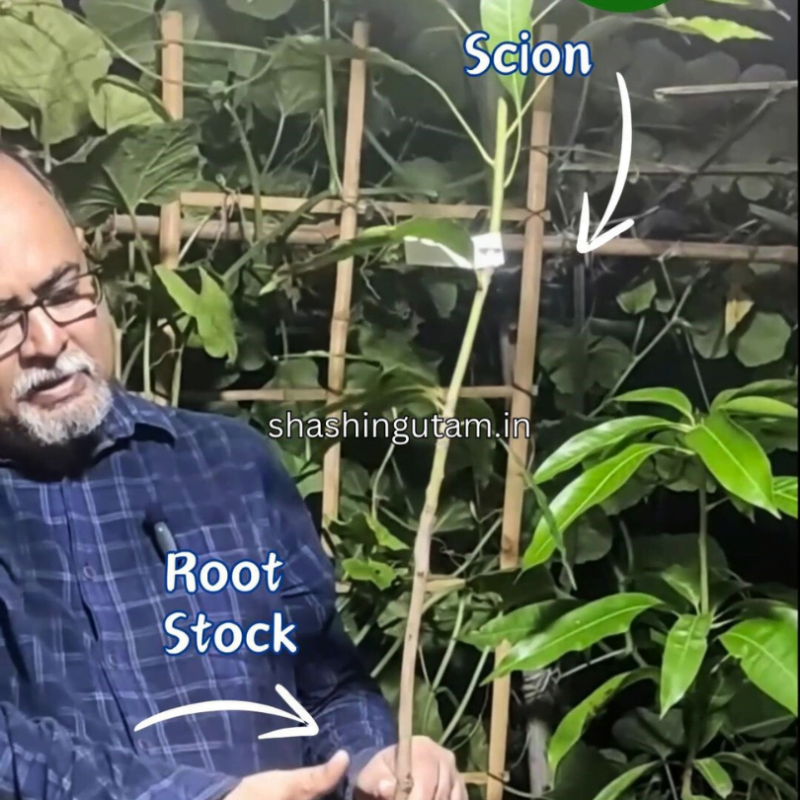
Understanding Grafted Mango Plants
Before we dive into the tips, let’s understand what a grafted mango plant is. Grafting is a process where a healthy branch (scion) from a desirable mango variety is attached to a robust root system (rootstock) of another plant. This method ensures that the plant will produce the same quality fruit as the parent tree and grow well in your garden.
Tip 1: Choose the Right Rootstock
The first thing you need to check when selecting a grafted mango plant is the rootstock. The rootstock should be a single, healthy stem without any branches coming out from the sides. This part of the plant provides the necessary support and nutrients for the scion, so it must be strong and disease-free. Look for a rootstock that is about the thickness of a pencil.
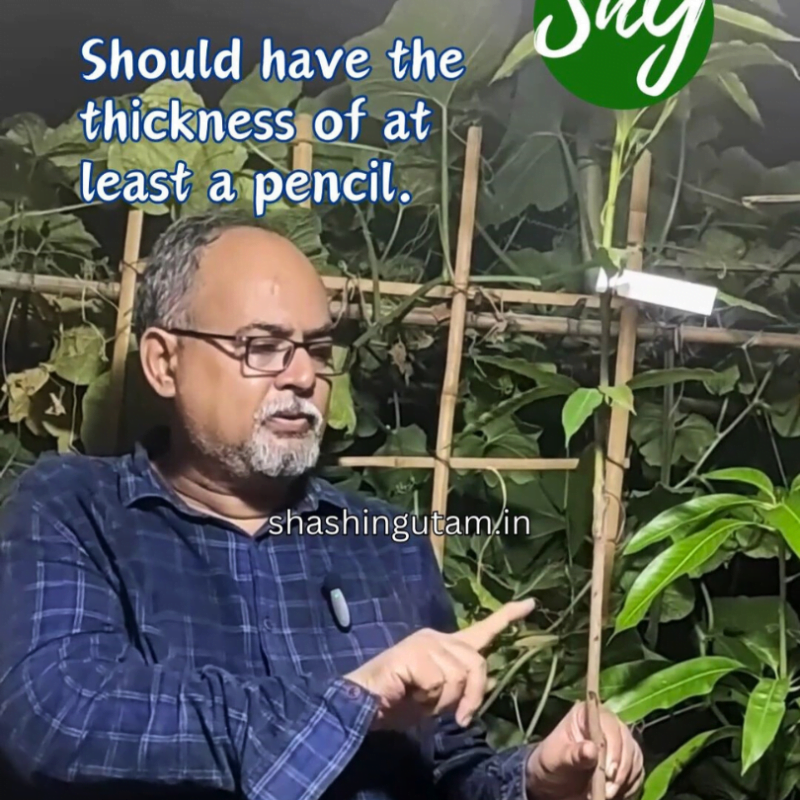
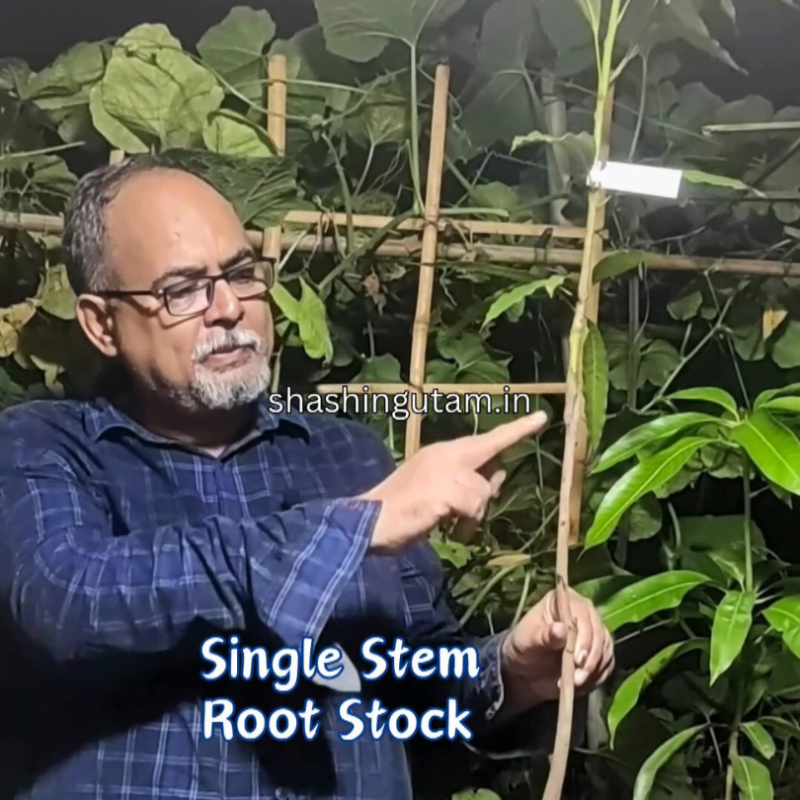
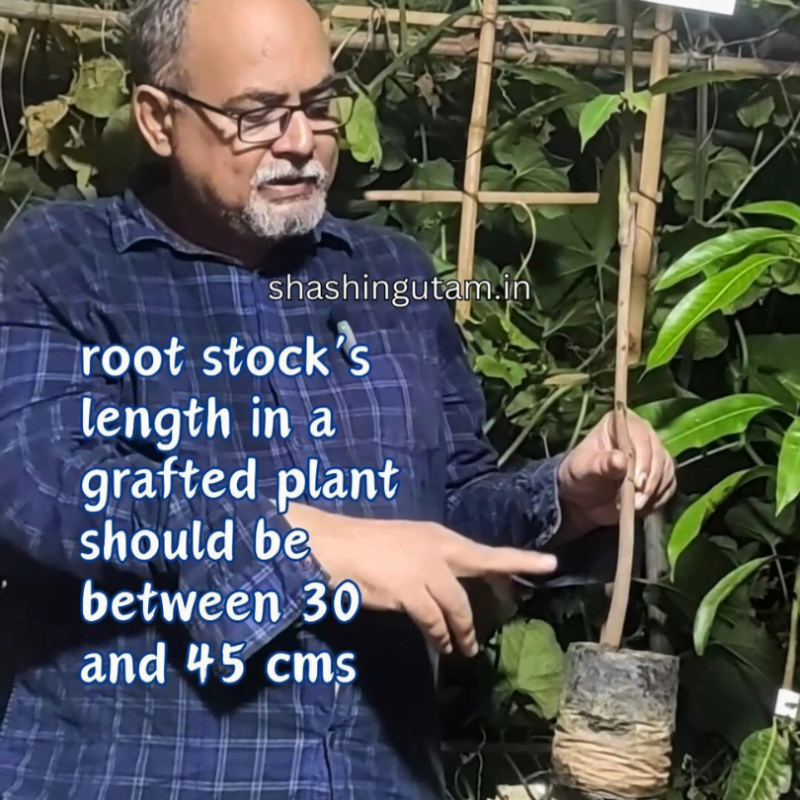
Tip 2: Check the Thickness of the Scion and Rootstock
A successful grafted plant has a scion and rootstock of similar thickness. This ensures that the graft will take and the plant will grow healthily. The ideal length for the scion should be around 30 to 45 centimeters. When you’re at the nursery, compare the thickness of the scion and rootstock. If they match, it’s a good sign that the graft will be strong.
Tip 3: Avoid Plants with Plastic Wrap
Many nurseries sell grafted plants that are only a few months old, often with plastic wrap around the grafted area. While this might seem like a good deal, it’s a red flag. The plastic wrap indicates that the graft might not have taken properly. A healthy grafted plant should have no visible plastic wrap and should look like one seamless plant. This means the graft has healed well, and the plant is likely to be more successful.
Tip 4: Look for New Growth
One of the best indicators of a successful grafted plant is new growth. When a graft takes well, the plant will start to produce new leaves and branches. Check the top of the plant for fresh, green growth. If you see new leaves, it’s a good sign that the plant is healthy and the graft was successful. Avoid plants that look stagnant or have no new growth, as they might not thrive once planted in your garden.
Join our Free WhatsApp Group / फ्री वॉट्सएप ग्रुप में हमसे जुड़े
Unlock expert gardening tips and connect with like-minded enthusiasts. Join our Free WhatsApp Group today!
बेहतरीन बागवानी टिप्स प्राप्त करें और समान विचारधारा वाले लोगों से जुड़ें। आज ही हमारे फ्री व्हाट्सएप ग्रुप से जुड़ें!
Our YouTube Channel: Shashi N Gautam Kitchen Gardeners
Subscribe our YouTube Channel | 400+ videos for Beginners Gardeners
हमारे यूट्यूब चैनल को सब्सक्राइब करे | 400+ एजुकेशनल वीडियो नए गार्डनर के लिए
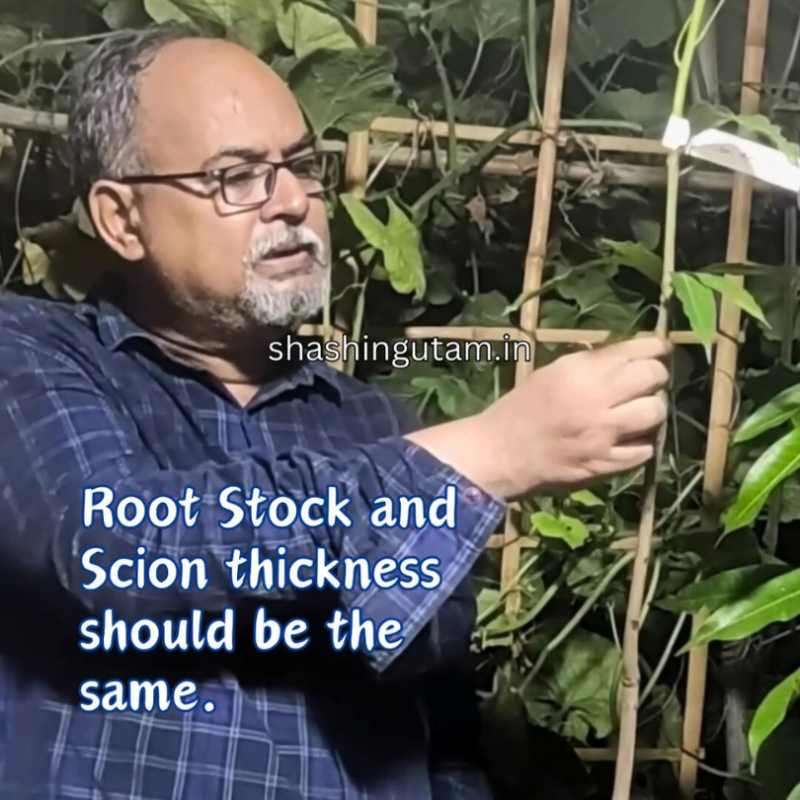
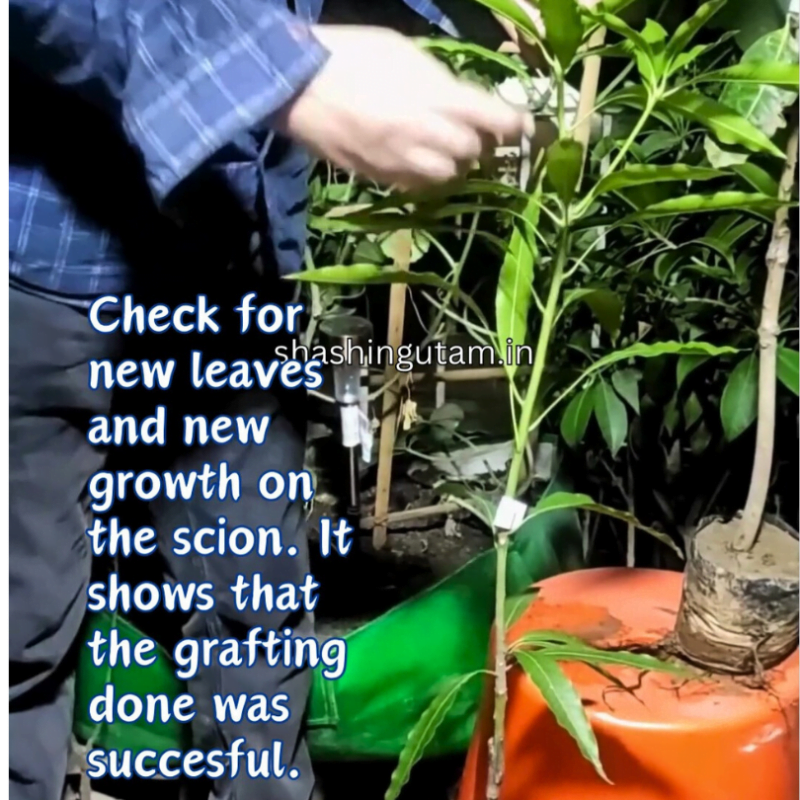
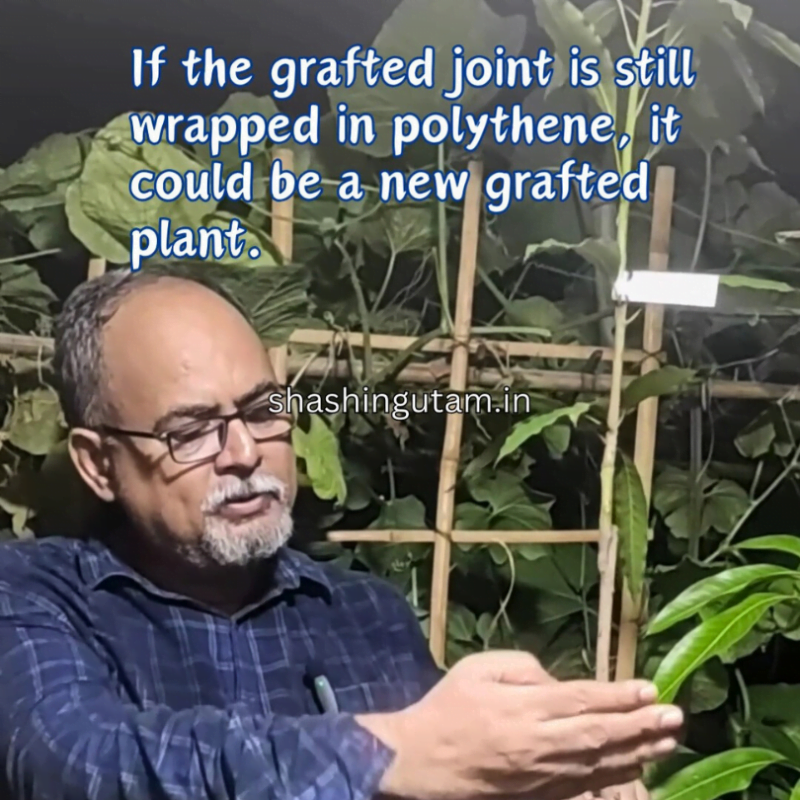
To buy original varieties of mango plants, check out the out the following organizations:.
Central Institute for Subtropical Horticulture, Lucknow.
CISH is famous for the mango varieties it has developed in past 2 decades that includes
- CISH Ambika
- CISH Arunika
- CISH Sagarika
- CISH Lalit
- CISH Shweta
- CISH Dhawal
- CISH Lalima
ICAR-IARI Indian Agricultural Research Institute
Varieties of Mango developed by IAR Pusa, Delhi
- Pusa Deepshikha
- Manohari
- Pusa Lalima
- Pusa Shresth
- Pusa Pratibha
- Pusa Pitamber
Visit the below link for Information on IAR Pusa Mango and Citrus fruit varieties.
Pusa Coloured Mango VarirtyCheck out the fruit plant nursery inside ICAR-IARI Pusa, Delhi
Bonus Tip: Avoid Common Mistakes
Here are a few additional mistakes to avoid when buying a grafted mango plant:
- Don’t Rush the Planting: Once you bring your plant home, don’t rush to plant it immediately. Give it some time to acclimatize to its new environment. Place it in a shaded area and gradually expose it to sunlight.
- Nutritional Care: Ensure that your plant gets proper nutrition. Use a balanced fertilizer and water it regularly, but don’t overwater. Mango plants need well-drained soil. Check out our slow release granular fertilizer: Soil Mix Booster and Flower Mate.
- Proper Support: Young plants might need support to stay upright. Use a stake if necessary to keep the plant stable.
Bringing home a healthy grafted mango plant can be a rewarding experience. By following these tips, you can avoid common mistakes and ensure that your mango plant thrives in your garden. Remember to choose a healthy rootstock, check the thickness of the scion and rootstock, avoid plants with plastic wrap, and look for new growth. With a little care and attention, you’ll soon enjoy delicious, home-grown mangoes.
Happy gardening!
Slow Release Fertilizer
Slowly releases important things like nitrogen, phosphorus, potassium and plant micronutrients into the soil over time and add beneficial microbes in the soil.



Essential Gardening Tips for Beginners: Complete Guide 2025
Complete step-by-step guide to urban container gardening, soil preparation, and growing fresh organic vegetables and fruits at home for beginner
Complete Home Vegetable Gardening Course – Soil – The Foundation of Growth
Sep
5 Organic Ways You Can Get Rid Of leaf Miners
Mar
Powdery Mildew Control
Apr
5 Amazing Tips For Growing Strawberries at home -Video (Hindi)
Feb
How to Grow Blueberries in Pots in India – Best Varieties, Chill Hours & Care Tips
Sep
Gardening Success Shared By Our Fellow Gardeners
Feb
100% Effective Way to Get Rid of Mealybug on Hibiscus Plants in 2 Steps
Jun
When Do Seedlings Need Fertilizer? Beginner’s Guide
Sep
6 Tips for Successful Germination Of Seeds
Oct
🍓 How to Grow Strawberries in Pots at Home in India: Complete Q&A Guide
Aug
Big Pots vs Good Soil: Which Wins?
Aug
🌱 Plan Your First Garden – Easy Crops for Beginner Success! 🌱
Sep
Charcoal in the Potting Mix: Helpful or Just Hype?
Jun
Tips for growing vegetables from seeds at home
Nov
Is Mosaic Virus or Leaf Curl Virus in Plants Treatable?
Aug
मिर्ची / चिली उगाए कैसे – ये 2 गलती कभी न करे
Jul